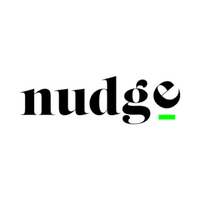A personalised benefits experience - how to meet expectations
Four-fifths of employees (82%) say it’s important for their organisation to see them as a person, not just an employee, according to research from Gartner.
While personalisation has long been an employee engagement staple, it comes with certain complexities.
Growing employee expectations mean organisations have had to rethink their benefit communication strategies, understanding the data to meet these new expectations.
How and why are employee expectations driving benefit communication strategies?
Understanding employee expectations
Gone are the days when a one-size-fits-all benefits package and communications could effectively meet the needs of a diverse workforce.
Today, employees want benefits that resonate with their unique circumstances and priorities. Whether it's comprehensive healthcare coverage, or financial education, the demand for personalized benefits is on the rise.
Employee insights
Central to crafting a benefits strategy that resonates with employees is the collection and analysis of employee insights.
By actively listening to feedback, understanding preferences and interests of their workforce, organisations can personalize benefits and communications to better align with the employee interests, needs and expectations.
This enhances satisfaction and, when it comes to communicationsalso contributes to a more engaged and motivated workforce.
Last year Nudge's global financial wellbeing research found that "loyal, engaged employees are more productive, and that leads to better business profitability."
But the reverse is also true: When employers don’t have loyalty, employees are disengaged and more likely to leave the organisation.
Personalised education
The most effective strategy to meet growing employee expectations is personalized education on benefits.
Many employees may not fully understand the breadth of benefits available to them or how best to utilize them for their unique circumstances or needs.
Our global financial wellbeing research revealed that, "33% of employees don't have a strong understanding of their benefits, or how to make the most of them."
By providing educational resources, tools and training, organisations can empower employees to make informed decisions about their benefits, maximising the value they derive and driving better benefit ROI.
Addressing growing expectations
The shift towards personalised education underscores a proactive approach to addressing growing employee expectations.
It goes beyond the traditional benefit communications to foster a culture of support and empowerment within the organisation.
When employees feel valued and equipped with the knowledge to make informed choices that align with their goals, it’s proven to improve loyalty and commitment.
Nearly half (44%) of employees with employer provided education are more connected to their employer compared to 20% without.
The future of benefits communications
Looking ahead, the trend towards personalized benefits education is set to continue evolving.
As workplaces become more diverse and inclusive, the need for personalised benefit communications will only intensify.
Organisations that embrace this shift and prioritize employee insights will not only attract top talent but also cultivate a workplace culture where employees thrive.
The evolving landscape of employee benefits underscores the importance of personalized education in meeting growing expectations.
By leveraging employee insights and offering personalized educational resources, organisations can create benefits communications that keep up with demand but also resonate deeply with their workforce.
Supplied by REBA Associate Member, Nudge
A leading financial wellbeing benefit using behavioural science & technology to help employees.








